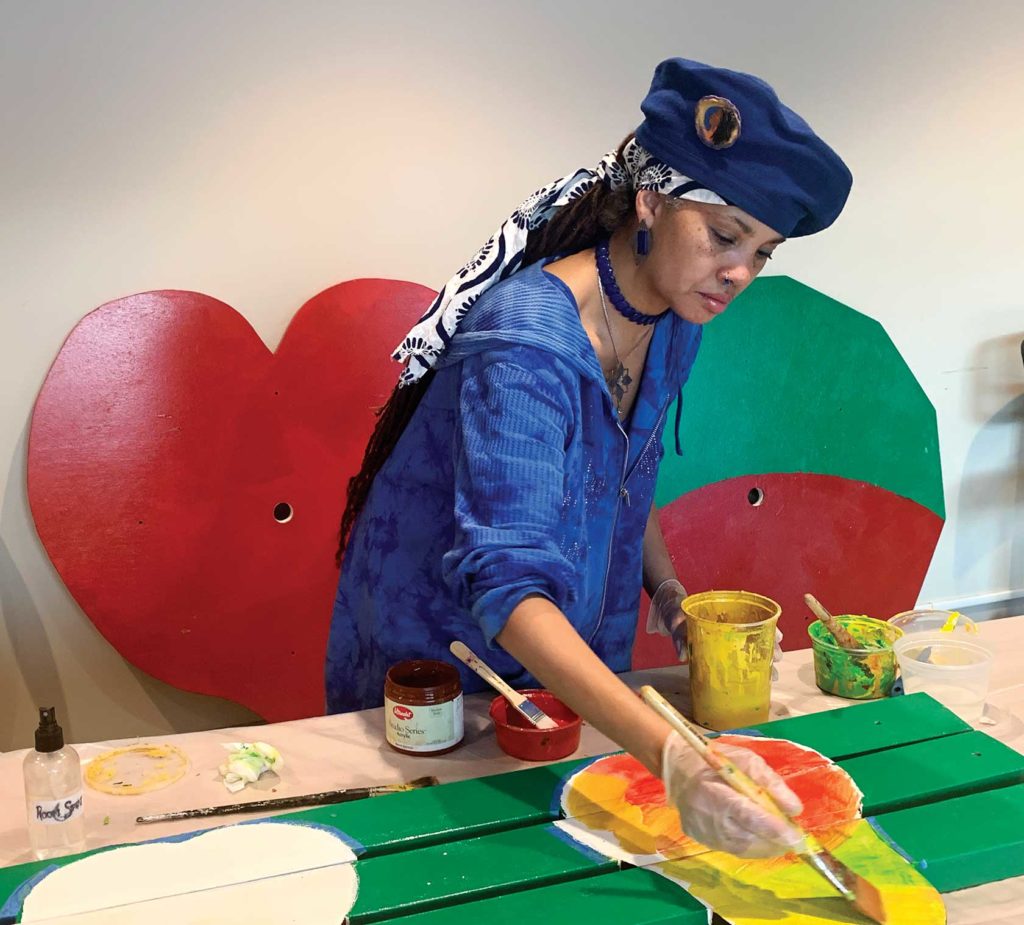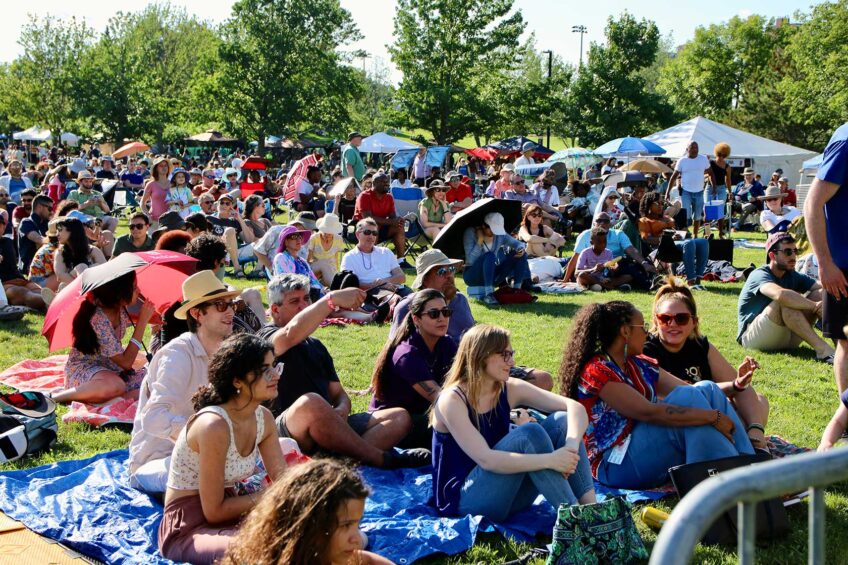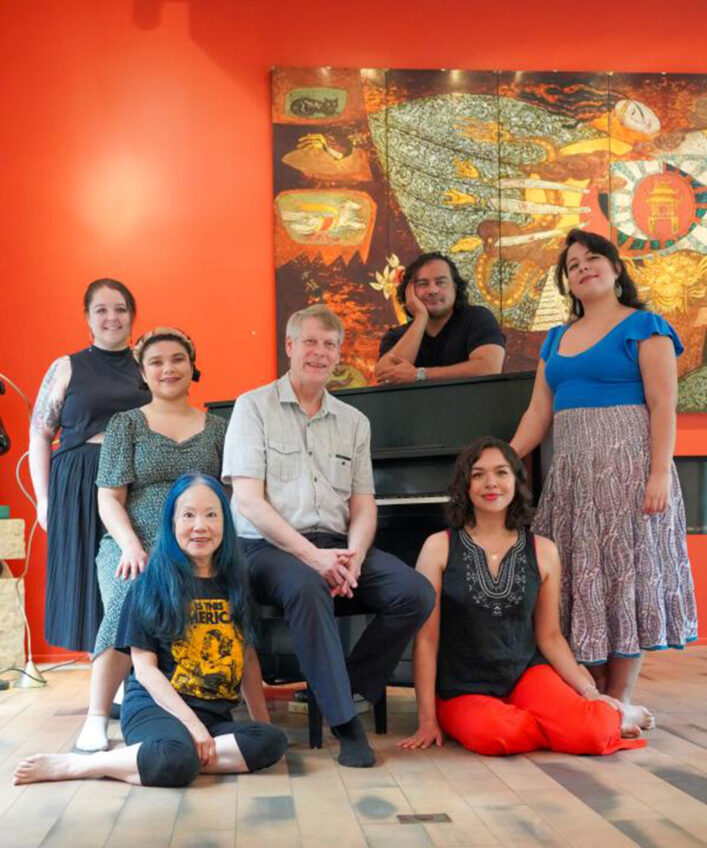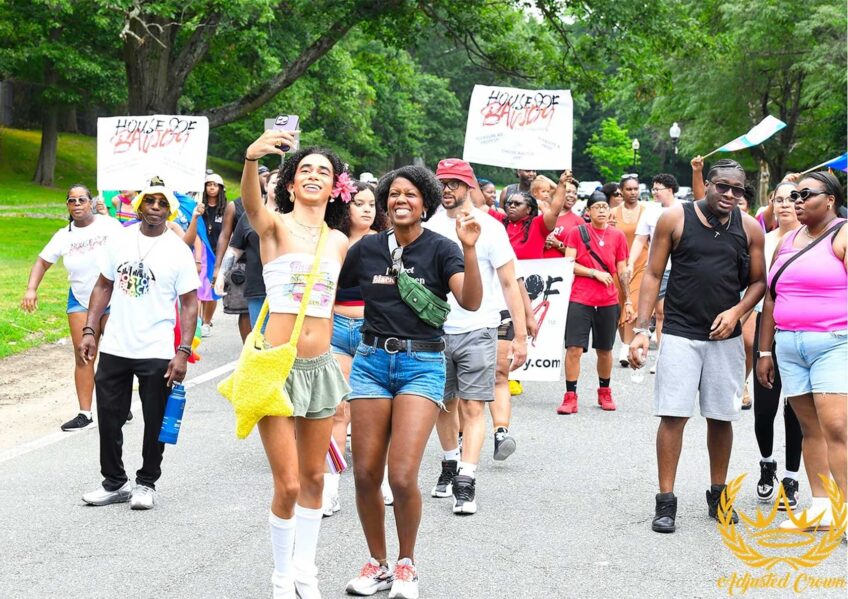
Five doors are at the entrance to Bartlett Station in Roxbury: Three are glass, and, to the right of those are two colorful doors leaning up against one another. The colorful doors don’t lead anywhere — they are pieces of a sculpture. One is painted and the other is mosaic, and both were found in the basement of a house in Randolph in 2004.
Artist and art educator Radiant Jasmin, 53, found the doors and used them for the sculpture entitled “Opening the Doors to Creativity in Community” in 2019. She was then asked to join the community advisory committee at Bartlett Station, a residential and multi-use development, and has been directing artistic and social justice projects in the development since.

The mosaic door of Radiant Jasmin’s sculpture “Opening the Doors to Creativity in Community.” PHOTO: ERYN MCCALLUM
Black artists in Boston are networking with one another and working to create their own artistic spaces and programs to resist a centuries-long history of racism in the city’s art world and find new ways to thrive within their careers and communities.
“It’s been hard to hold on and to have the belief in my own self and my own artistry as an artist, and then to be able to extend that out and bring in other artists,” Jasmin said in an interview in one of her working spaces at Bartlett Station. “And we all inspire and encourage each other. It’s not just me. It’s back and forth, where it’s reciprocal, and we’re helping each other and cheering each other on.”
Jasmin works with other artists within Bartlett Station, located in the Nubian Square area, to make their own art and assist in the artistic development of the sector.
“Nubian Square [is an] example of Black people coming together as a collective and investing in their own community,” Boston artist Marlon Forrester, who recently had an exhibit at the Institute of Contemporary Art, said in a Zoom interview. “And that starts with us acknowledging that there is a system of oppression in place, what are we gonna do about it?”
Although older generations of Black artists see progress, Boston’s art gallery scene has an anti-Black history that is still prevalent today, according to Robert Freeman. Freeman is a 76-year-old artist who has been creating art in Boston since the late 1960s. He said it was difficult for Black artists to get their work shown, especially at galleries on Newbury Street. Freeman sees more representation in Boston’s well-known galleries and museums today but still awaits more artistic displays of Black culture.
“We need to be shown more,” Freeman said in a phone interview from his home in Jamaica Plain. “We need to be supported more. Specifically for Boston, galleries need to [be] willing to take chances and open their doors a little wider to all cultures, particularly African American culture, [which] has so much to say.”

Artist Cedric Douglass’s mural at Bartlett Station was commissioned by Boston Medical Center and portrays his grandmother’s move from Jamaica to Roxbury, where she worked for BMC for 30 years. PHOTO: Eryn McCallum.
For Black women, the intersection of race and gender makes success even more difficult.
“I’ve been speaking very loudly, as well as some of the other members of our community advisory committee, about the lack of visibility for Black women artists,” Jasmin said. “I keep talking to people, and they barely can name any Black women muralists from the community, who live here or are from here.”
Visual artist Youveline Joseph, 27, creates lively, colorful portraits of Black people — both famous and unidentified — as a method of combatting the lack of representation.
“Most of my supporters are women,” Joseph said in a phone interview. “A lot of times, when women do see my artwork, they get really happy and excited, like they feel seen, or it looks like someone they know. They just love seeing positive imagery of themselves, especially darker-skinned women. That’s probably my favorite thing to paint, only because I’m also a dark-skinned woman, so I live the reality of it.”
Forrester encourages resistance through community healing and self-reliance. To him, this means Boston’s Black arts community continuing to build their own galleries, create their own cultural hubs, and show up to events and shows when Black representation appears at any gallery around the city.
Jasmin said, “I know that what I do, it makes a real difference. My community is not just about [putting] some pretty paintings up on the wall. It’s what our life is. It’s about our health and our survival.”






